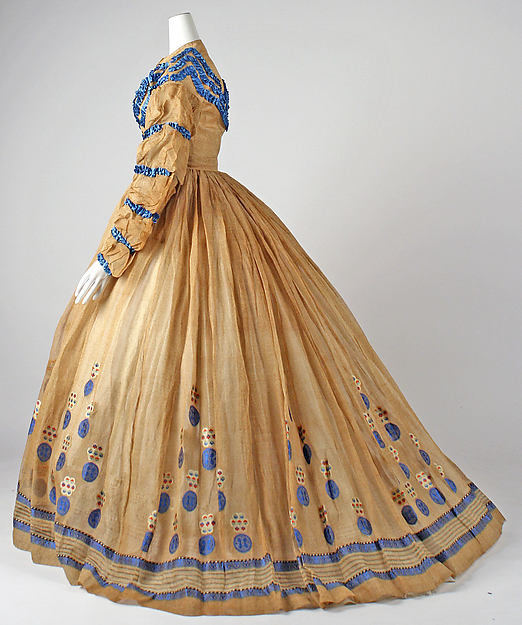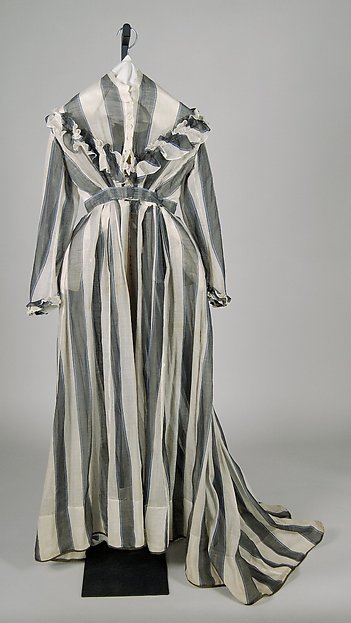Getting ready for the 150th anniversary of President Lincoln's Springfield funeral; this means a whole ensemble for Mom, and hopefully some new '65 pieces for me. The dress lengths I have in mind are light cottons: a plaid shirting for Mom and a floral-printed sheer for me. Both are predominately black and white, and when properly accessorized should make nice, respectfully sober day-dresses which are not distinctly "mourning".
Dress research:
1865: The overall look is slimmer, and more tailored than in previous years. Skirt fullness is moving towards the rear, leaving a flatter front. Coat sleeves are ubiquitous, especially narrow versions, replacing the wide open sleeves of the late 50s and early 60s. Flat trims are popular, and flounces (when seen) are more moderate than previously. Hoops are still worn, though the shape is past round and getting pretty elliptical; skirts distinctly full towards the back with occasional trains. With this flat/smooth look, gored skirts are becoming more popular, and pleating is superseding gauging. White accessory collars have gotten narrower, and may be a narrow band peaking up from beneath a self-fabric collar. The high "spoon bonnet" of 63-4 is out; it is replaced by the "empire bonnet" and its competitor, the ultimately victorious fanchon.
 |
Walking Dress, January 1865, Peterson's Magazine |
 |
| April 1865, Peterson's |
 |
| July 1865, Peterson's |
The fashion plates and descriptions primarily deal with silks; even Janet Arnold's excellent
Patterns of Fashion doesn't feature a cotton dress c. 1865. While the lines and shapes may be the same, some high-fashion details never get translated into prints, and others are very rare, so it's good to check some original dresses in the target textile. Fortunately, the lovely SA ladies found some original sheers for study:
And I finally had some luck digging around the Met:
I'd love to see a color picture of this one, ideally over skirt supports to show off that train...









No comments:
Post a Comment
Thanks for commenting!